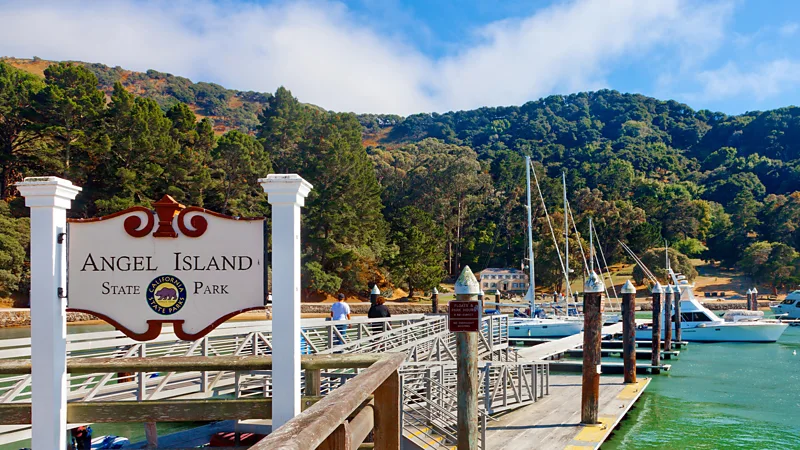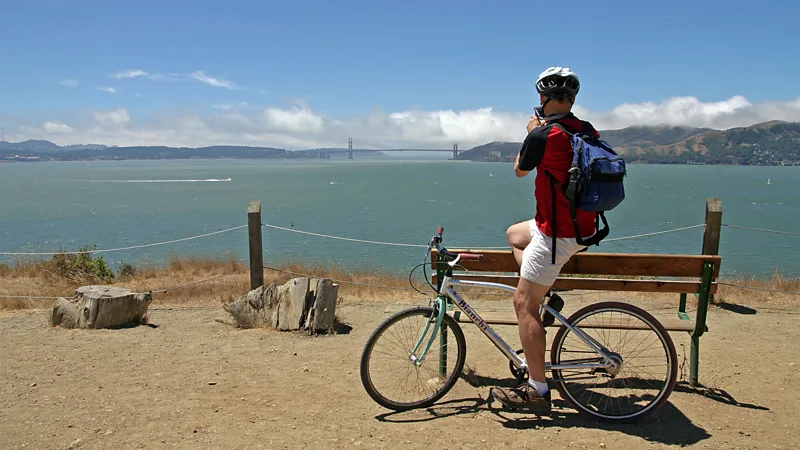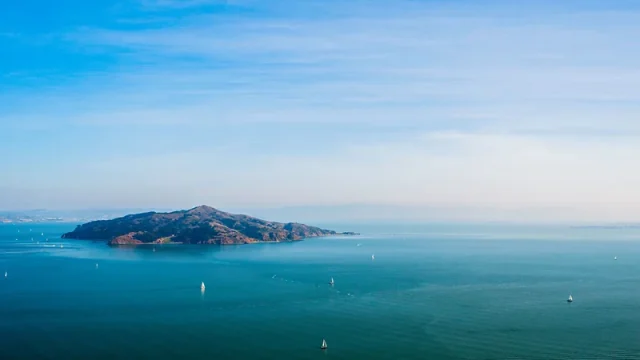Introduction;
Angel Island, the largest natural island in San Francisco Bay, is a gem of historical significance and natural beauty. Once a bustling quarantine and military station that processed up to one million immigrants, today it serves as one of the Bay Area’s best urban getaways(Angel Island history).
A Journey Around Angel Island
Breathtaking Views and Scenic Routes
Cycling around Angel Island offers unparalleled views of Northern California. The 5.5-mile Perimeter Loop, a paved path around the island, presents postcard-worthy vistas at every turn. From the iconic Golden Gate Bridge to the infamous Alcatraz Island, the scenery is breathtaking.
Overlooked by Locals and Tourists Alike
Despite its rich history and stunning landscapes, Angel Island is often overshadowed by other Bay Area attractions like Sonoma County’s wineries, Sausalito‘s waterfront, and San Francisco’s eclectic neighborhoods. This is surprising given its fascinating past and the array of outdoor activities it offers, including hiking, cycling, and camping.
A Rich Historical Background
The Indigenous Coast Miwok People
Angel Island was initially home to the Coast Miwok people, who used it as a base for fishing, hunting, and foraging. Their presence on the island dates back thousands of years, long before European settlers arrived.
Military Significance
Due to its strategic location, Angel Island became a military reserve from 1850 until World War II. The island’s east side is dotted with the ruins of old military buildings, including the oldest standing group of US Civil War structures at Camp Reynolds.

Immigration Station: The Ellis Island of the West
In 1905, 20 acres of Angel Island were transformed into an immigration station, processing up to one million immigrants between 1910 and 1940. Most of these immigrants were Asian, earning the station the nickname “Ellis Island of the West.” The station’s history is marked by the Chinese Exclusion Act of 1882 and the internment of Japanese Americans during World War II.
Exploring Angel Island Today
Ayala Cove: The Main Arrival Point
Visitors to Angel Island typically arrive at Ayala Cove, named after Spanish naval officer Juan Manuel de Ayala, the first European to sail into San Francisco Bay. Ayala Cove is the island’s main hub, offering amenities like a café and bike rentals.
Cycling the Perimeter Loop
The Perimeter Loop is a popular cycling route, surrounded by native oak, bay trees, and introduced species like Monterey pine and eucalyptus. Cyclists encounter remnants of the island’s diverse past, from military ruins to natural beauty spots.
Historical Landmarks and Information
Throughout the island, informational signs detail Angel Island’s multifaceted history. Key sites include Battery Ledyard, one of three decommissioned military gun batteries, which offers stunning views of the Golden Gate strait.
The Angel Island Immigration Station Museum
A significant landmark on the island is the former immigration and internment center, now a museum. The museum highlights the harsh realities faced by immigrants detained here, including Chinese poetry etched on the barracks’ walls.
Hiking and Camping on Angel Island
Hiking Trails
Angel Island boasts 13 miles of hiking trails, including the challenging but rewarding Sunset Trail. This trail ascends to the island’s highest peak, Mount Livermore, offering breathtaking panoramic views of the Bay Area.
Camping Opportunities
The island features 16 primitive campsites, divided among four locations. These sites offer a rustic camping experience with stunning views, particularly from Ridge Camp near Battery Ledyard. However, camping reservations fill up quickly and must be made months in advance.
The Island’s Natural Beauty
Flora and Fauna
Angel Island is home to a diverse range of flora and fauna. Visitors can spot red-tailed hawks, California poppies, and various introduced tree species. The island’s natural beauty is complemented by its historical landmarks, creating a unique blend of nature and history.
Seasonal Highlights
The island’s beauty peaks during spring, when wildflowers like California lilac bloom, adding vibrant colors to the landscape. These natural elements enhance the island’s scenic appeal, making it a perfect getaway from the urban hustle.
The Challenges and Rewards of Visiting
Getting There
Angel Island is accessible only by boat, with regular ferries from Tiburon and San Francisco. The island’s remote nature adds to its allure, providing a peaceful retreat just a short ferry ride from the city.

Navigating the Island
Cycling and hiking are the best ways to explore Angel Island. While the island’s trails and paths can be challenging, the effort is rewarded with stunning views and a sense of connection to its rich history.

Planning Your Visit
Advance planning is essential for an overnight stay on Angel Island. Camping spots are limited and highly sought after, particularly the covered sites at Ridge Camp. Day trips require careful timing to catch the last ferry back to the mainland.
Conclusion
Angel Island, often overlooked by locals and tourists, is a treasure trove of history and natural beauty. From its days as a military reserve and immigration station to its current status as a premier urban getaway, the island offers a unique blend of cultural heritage and outdoor adventure. Whether you’re cycling the Perimeter Loop, hiking to Mount Livermore, or simply enjoying the scenic views, Angel Island provides a memorable escape that highlights the rich tapestry of the San Francisco Bay Area’s history and landscape.











